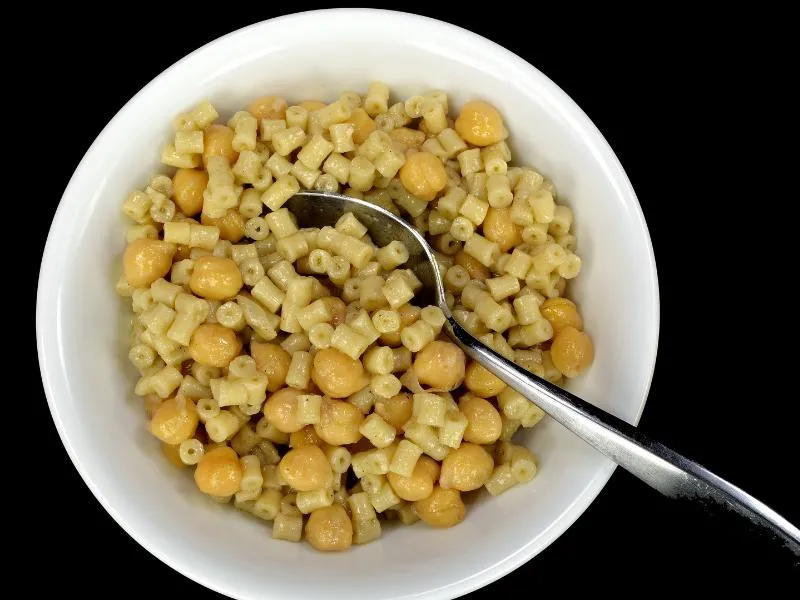Pasta e Ceci
Hearty pasta and chickpea soup enriched with aromatics in a velvety tomato-infused broth.
👉 View Authentic Recipe 👈
About This Dish
Pasta e Ceci (pasta with chickpeas) is a quintessential Roman comfort food that exemplifies the “cucina povera” tradition of central Italy, particularly in the Lazio region. This one-pot dish dates back centuries when inexpensive, shelf-stable ingredients like dried pasta and legumes formed the backbone of everyday cooking for working-class families.
The foundation of this humble yet satisfying dish rests on the perfect balance between starchy pasta, protein-rich chickpeas, aromatic vegetables (typically onion, celery, and carrot), and minimal seasonings—often just rosemary, garlic, and a small amount of tomato. Regional variations exist throughout central and southern Italy, with some versions being more soup-like while others are thicker and pasta-forward.
Traditionally prepared during the colder months and on Fridays when Catholic traditions limited meat consumption, Pasta e Ceci represents the ingenious way Italian cooks transformed simple pantry ingredients into nourishing, flavorful meals. The dish embodies the resourcefulness of Italian cuisine where cooking techniques elevate basic ingredients into something greater than the sum of their parts.
🧑🍳 Analyzed by CucinaBot
Why This Dish Works
The culinary magic of Pasta e Ceci comes from the synergistic relationship between starches and proteins. As the pasta cooks directly in the broth, it releases amylose and amylopectin that create a naturally creamy texture without cream. The chickpeas provide earthy notes and protein, while their starch further thickens the broth. Meanwhile, the soffritto (sautéed aromatics) creates a flavor foundation through the Maillard reaction, and the slight acidity from tomatoes balances the dish’s richness.
Key Success Factors
- Pasta Choice: Small shapes like ditalini or broken spaghetti are crucial for proper texture and cooking evenly in the broth
- Starch Retention: Never drain or rinse chickpeas; their starchy liquid is essential for the characteristic velvety consistency
- Proper Reduction: The liquid should reduce enough to coat the pasta but still maintain a soupy quality
- Aromatic Base: A properly sautéed soffritto of finely diced vegetables creates the foundational flavor
Common Pitfalls
Many modern interpretations over-complicate this dish with unnecessary ingredients like heavy cream, excessive herbs, or too much tomato, which mask its essential character. Another common mistake is treating it strictly as either soup or pasta—authentic Pasta e Ceci sits perfectly between these categories with a consistency that’s neither too brothy nor too dry. Using pre-cooked pasta or rushing the cooking process prevents the critical starch release that gives the dish its signature texture.
How to Judge Authenticity
When reviewing recipes, look for these markers of authenticity:
- Pasta cooked directly in the broth, not separately
- Minimal ingredients (no more than 8-10 core components)
- Light tomato presence (just enough to color and flavor, not dominate)
- Some form of aromatic base (soffritto or at minimum, garlic and onion)
- Final consistency that’s thicker than soup but still has some broth